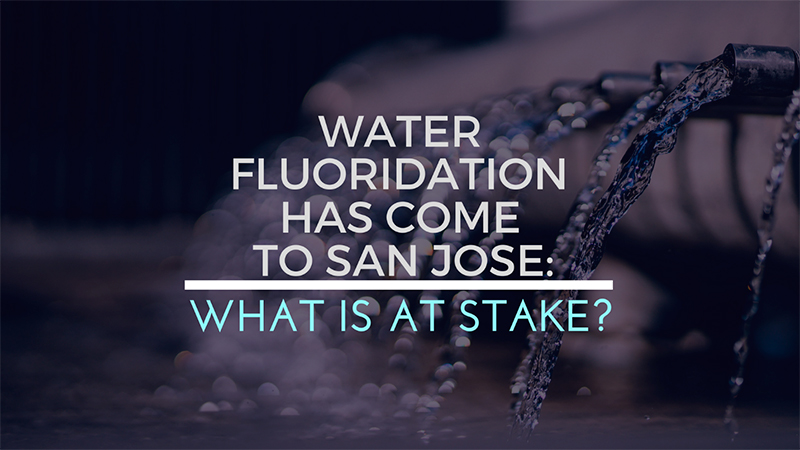Posted by Floralyn Teodoro on Feb 28th 2017
Water Fluoridation Has Come to San Jose: What Is at Stake?
After years of being the largest city in the United States without fluoridated water, large portions of San Jose finally received fluoride as an additive to their drinking water late last year.

In December of 2016, water fluoridation has finally come to San Jose, California. Two fluoride tanks and a dual metering pump system were installed at the Santa Teresa Water Treatment plant located in South San Jose.
Water Fluoridation in San Jose
With the aim to help reduce cavities, tooth abscesses, and root canals in children, especially those who can’t afford dental care, the Santa Clara County Public Health Department along with other groups persuaded the Santa Clara Valley Water District to retrofit the district’s water treatment plants using the $6.2 million budget.
According to the water district, about 415,000 residents already have fluoride in their drinking water, including those residing in Palo Alto, Sunnyvale, and Mountain View. In East San Jose, Santa Teresa, and Almaden Valley, about 230,000 residents also received fluoridated water. In North San Jose, there are already roughly 100,000 recipients.
By 2020, an estimate of 1.16 million residents will be supplied with fluoridated drinking water, leaving only 700,000 people without it.
The Health Risks of Fluoridation
In March of 2014, the journal Lancet Neurology classified fluoride as a developmental neurotoxin. It has been linked to other chemicals and poisons that are known to be harmful to the human brain such as lead, arsenic, toluene, methyl mercury, and tetrachloroethylene, as reported by the Fluoride Action Network (FAN).
Developmental neurotoxins often cause untreatable brain disorders such as autism, ADHD, learning difficulties, and other similar cognitive impairments.
Although fluoride is a naturally occurring mineral, the type of fluoride most often used in drinking water fluoridation is hydrofluorisilicic acid (HFSA) – an industrial waste product known for its use in fluoridation of water. In April of 2013, the acting administrator of U.S. Environmental Protection Agency even petitioned to put a stop to artificially fluoridating drinking water with HFSA due to the health risks it brings to the citizenry.
Too much exposure to fluoride doesn’t only cause developmental neurotoxicity; it also causes dental and skeletal fluorosis and endocrine system disruption.
Reduction of Fluoride Exposure
Besides consumption of fluoridated water, there are other ways one can get exposed to fluoride. To protect yourself and your loved ones from the dangers of high exposure to fluoride, you must:
- Use non-fluoride toothpaste especially for your children who are age 2 and below – even Colgate recommends that. Children ages 2 and below are prone to swallowing toothpaste, so it’s safer to use non-fluoride toothpaste instead.
- Be mindful of fluoridated drugs such as Cipro, Niflumic acid, Flecainide, Voriconazole, Sevoflurane, and Isoflurane. These drugs metabolize fluoride in the body and increase one’s fluoride exposure. Choose safer alternatives if possible.
- Practice purchasing and consuming fresh or less processed foods. Most often, beverages and food items made with fluoridated water also have fluoride in them. The more processed a food is, the higher the amount of fluoride in it.
- Invest in water filters that can filter out fluoride. Note that not all water filters are capable of removing fluoride. The only types of water filters that can filter out fluoride are reverse osmosis filters, deionizers, and those with activated alumina.
With fluoride being added to your water supply, whether you need it or not, your fluoride exposure is increased without your consent. If you want to ensure that you’re only consuming fluoride-free water, invest in a water filter or a home water filtration system today.
CWR Enviro offers a variety of water filters depending on the unique needs of its consumers. As the leader in providing the most effective (air and water) filtration systems, CWR can also help you remove fluoride from your drinking water.

